The ZZ plant is one other one in all our favourite low-maintenance houseplants. They’re simple to look after, onerous to kill, and all the time look full & leafy. They’ve even earned the nickname “Eternity Plant” as a result of they’re virtually indestructible! That’s why they’re a best choice for industrial areas, physician’s places of work, and busy houses like ours. Don’t you’re keen on a home plant you may neglect about?
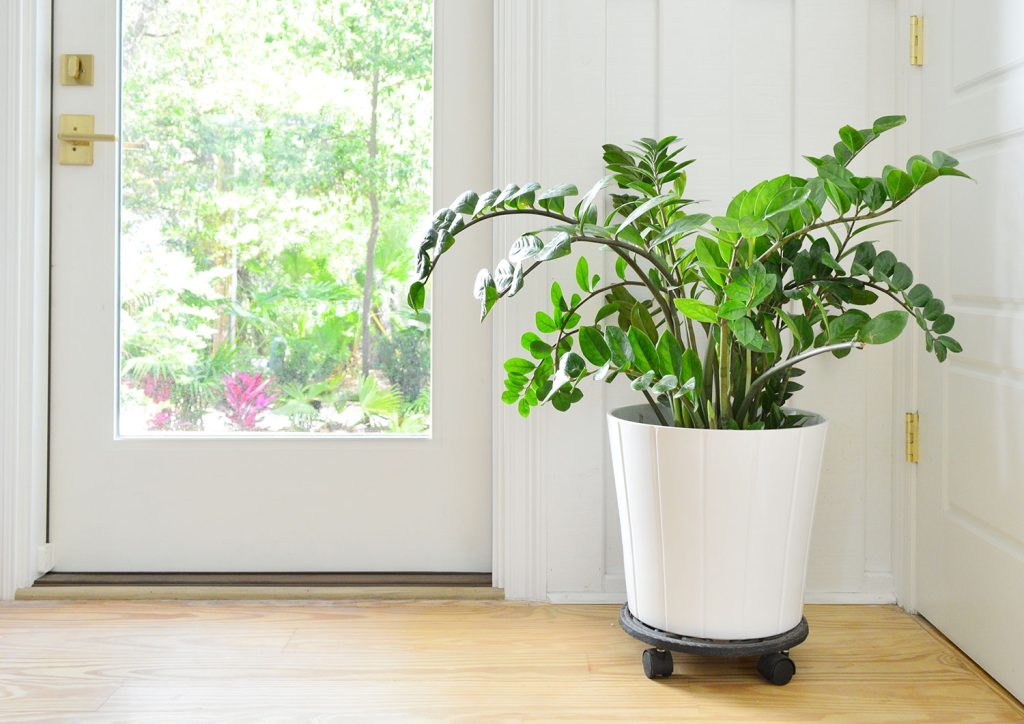

ZZ vegetation are offered in quite a lot of sizes, which means they’re nice for cabinets, tabletops, and small surfaces in addition to bigger statements on the ground. Now we have some which might be over 3 ft tall with their pots!
ZZ Plant Fast Information
Right here’s what that you must find out about your ZZ plant at a look:
- Latin title: Zamioculcas zamiifolia
- Plant household: Araceae or Arums, which incorporates Philodendron, Alocasia, Aglaonema, Monstera, and Peace Lily
- Widespread titles: ZZ plant, Zanzibar Gem, Zuzu plant, Emerald Palm, Eternity plant
- Native to: East Africa
- Gentle: Medium oblique mild, however can be low-light tolerant
- Watering: Each 2-3 weeks throughout its rising season
- Soil: Customary potting combine so long as it drains nicely
- Very best Humidity: Common family humidity, ideally 40-50%
- Very best Temperature: 65°F to 75°F
- Chilly Hardiness: USDA Zones 9b-11
What Is A ZZ Plant?
The ZZ plant (Zamioculcas zamiifolia) is a pretty, tropical houseplant recognized for its waxy inexperienced leaves and upright progress. It’s native to international locations in japanese Africa comparable to Kenya, Tanzania, and Zimbabwe. They’re nice for houses and places of work due to their full leafy look and low-needs care routine. Its leaves are additionally naturally shiny and shiny and glossy, which makes it look wholesome and brilliant even when it has been barely uncared for.
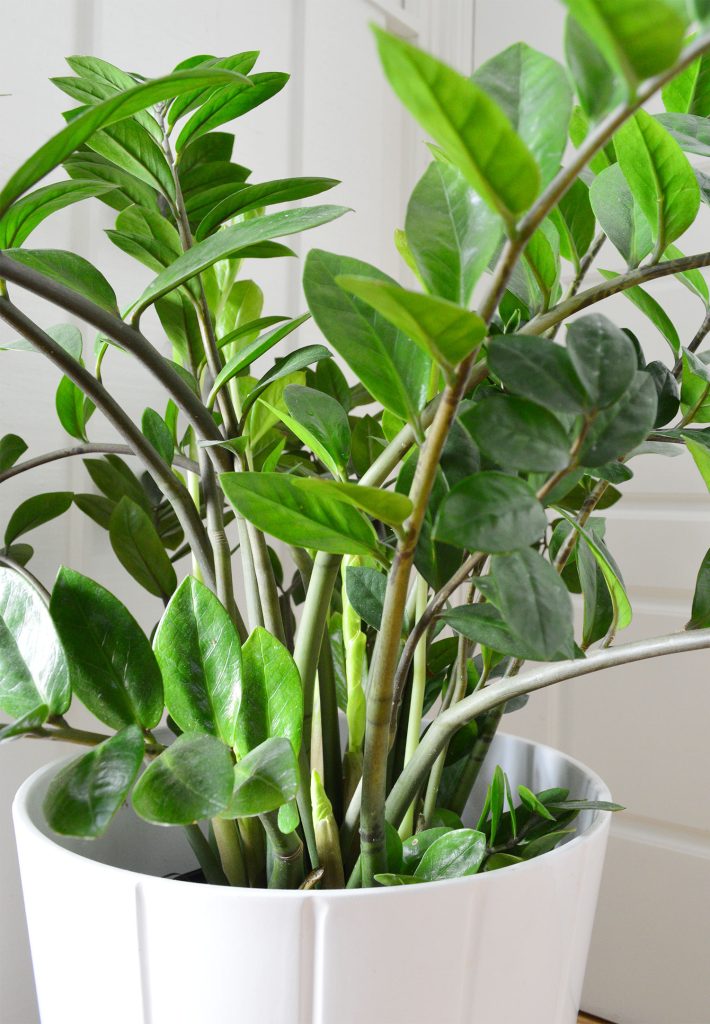

ZZ vegetation develop from rhizomes below the soil, which appear to be small potatoes and assist them retailer water during times of drought. The “stem” of the ZZ plant is its leaf, just like how we consider a palm leaf or fern leaf. The naked decrease a part of this stalk is named the petiole and the higher portion lined in leaflets is named the rachis. The shiny leaflets develop in pairs. We’ll speak about propagation extra later, however ZZ vegetation will be propagated from cuttings on the petiole, rachis, or leaflet.
What Are Different Names For A ZZ Plant?
The ZZ plant will get its title from the initials of its Latin botanical title: Zamioculcas zamiifolia. This title is essentially the most generally used, however it additionally goes by a number of different nicknames:
- Zanzibar Gem
- Zuzu Plant
- Emerald Palm
- Eternity Plant
That final nickname, the Eternity plant, references its hardiness – they appear to stay without end! For that motive, some folks additionally see it as an emblem of endurance, prosperity, and an extended life.
Tips on how to Care For A ZZ Plant
ZZ vegetation are an awesome newbie home plant since you don’t want too put a lot thought into them. However listed below are a couple of care tricks to maintain it wanting its finest.
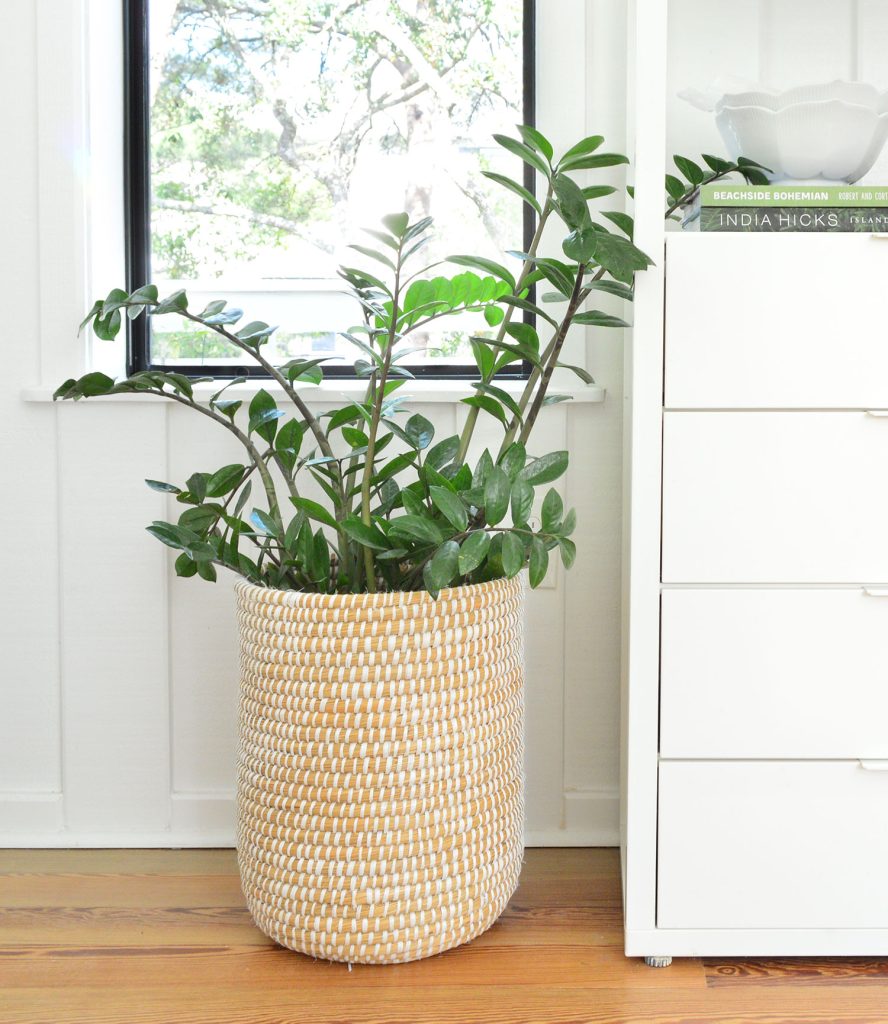

Gentle
ZZ vegetation do finest in medium-to-bright oblique mild, however may also be saved in low mild situations. They’ll even survive below solely fluorescent or synthetic mild! Nonetheless, the sunnier the situation, the quicker and bigger it should develop. Simply keep away from spots with a number of direct solar, since this could burn its leaves.
Watering
Attempt to water your ZZ plant as soon as each 2-3 weeks within the spring and summer season, and as soon as a month within the fall and winter. They don’t like sitting in water, so don’t water it if the soil remains to be moist. Keep in mind, ZZs are drought tolerant (because of its underground rhizomes that retailer water) so it’s finest to underwater, not overwater, this houseplant.
Soil & Repotting
A regular potting combine works nicely for ZZ vegetation, offered they drain nicely. ZZ vegetation may tolerate being barely rootbound, so that they don’t must be repotted as ceaselessly as different houseplants. They need to be blissful of their present pot for 2-3 years earlier than that you must repot into a bigger pot. Ensure any pot has good drainage holes. Whereas repotting, think about using one in all its rhizomes to propagate a brand new plant!
Temperature & Humidity
ZZ vegetation do nicely in common family temperatures and humidity ranges so don’t overthink this half. They like temperatures of 65°F to 75°F and might maintain harm below 50°F. They do finest in 40-50% humidity ranges, which mimic their native surroundings. However they will additionally tolerate drier air.
Pruning
We don’t prune our ZZ vegetation usually, other than clipping parts which might be getting too lengthy or leggy. When pruning a ZZ, use clear sharp scissors to make a 45-degree minimize proper above a node (the place a leaf meets the stem). If eradicating a complete stem, minimize the petiole near the soil line. This can assist management the dimensions and form of your plant. You may as well use clipped parts to propagate a brand new plant!
Fertilizer
Throughout its spring & summer season rising season, think about including a balanced fertilizer as soon as a month. These houseplant tablets are simple to drop into your watering can.
Dusting
Like all houseplants, ZZ vegetation profit from semi-regular wiping of their leaves. Eradicating mud helps keep their brilliant shiny look and in addition promotes photosynthesis. A microfiber material, damp paper towel, or particular plant wipes are nice for this job. It may be a bit tedious with a ZZ like ours that has a number of leaves!
Tips on how to Propagate ZZ Vegetation
There are a number of methods to propagate your ZZ plant into new vegetation. It is a nice free solution to develop a brand new ZZ for your self or a good friend. Since they’re such simple beginner-friendly vegetation they make the proper plant present!
- Division: Whereas repotting your ZZ plant, separate any of its potato-like rhizomes that develop underground. These will be planted in new pots to create new ZZ vegetation.
- Stem Slicing: Use a minimize or damaged portion of the petiole or rachis. Attempt to decide on a bit with a minimum of 3-5 leaflets above your minimize. For a petiole chopping, attempt to minimize near the soil line. Stick the minimize finish in water, ensuring no leaves are submerged. New roots and rhizomes ought to develop in a couple of months. As soon as roots are a minimum of 1″ lengthy, pot your chopping in soil.
- Leaf Slicing: You may as well use particular person ZZ leaflets, minimize proper above the node, to develop new roots and rhizomes. It’s finest to take a number of leaves at a time, stick them in shallow soil, and water anytime the soil is absolutely dry. After a number of months, they need to start to develop upwards.
Widespread Points
Like all houseplants, ZZ vegetation are vulnerable to some frequent points. Right here’s what to look out for:
- Yellow leaves: You possibly can be overwatering or underwatering your ZZ. In case your soil remains to be moist, it’s doubtless overwatered. Regulate your watering schedule accordingly. Yellowing is also an indication of an excessive amount of direct daylight.
- Root rot: When you discover a foul odor or yellowing stems, your ZZ might be sitting in water, which causes root rot. Some vegetation can’t get better from this, however you may repot into contemporary soil and take away useless roots as you go. Be sure you use a well-draining soil to stop future rot.
- Pests: ZZ vegetation can entice frequent houseplant pests like aphids, gnats, mealybugs, spider mites, and extra. Search for broken spots, wilting leaves, or webs. Most pests will be eliminated by hand after which deal with the plant with neem oil.
- Browning ideas: This can be an indication of overfertilization, so in the reduction of on any fertilizer you will have been including to your ZZ.
Different ZZ Plant FAQs
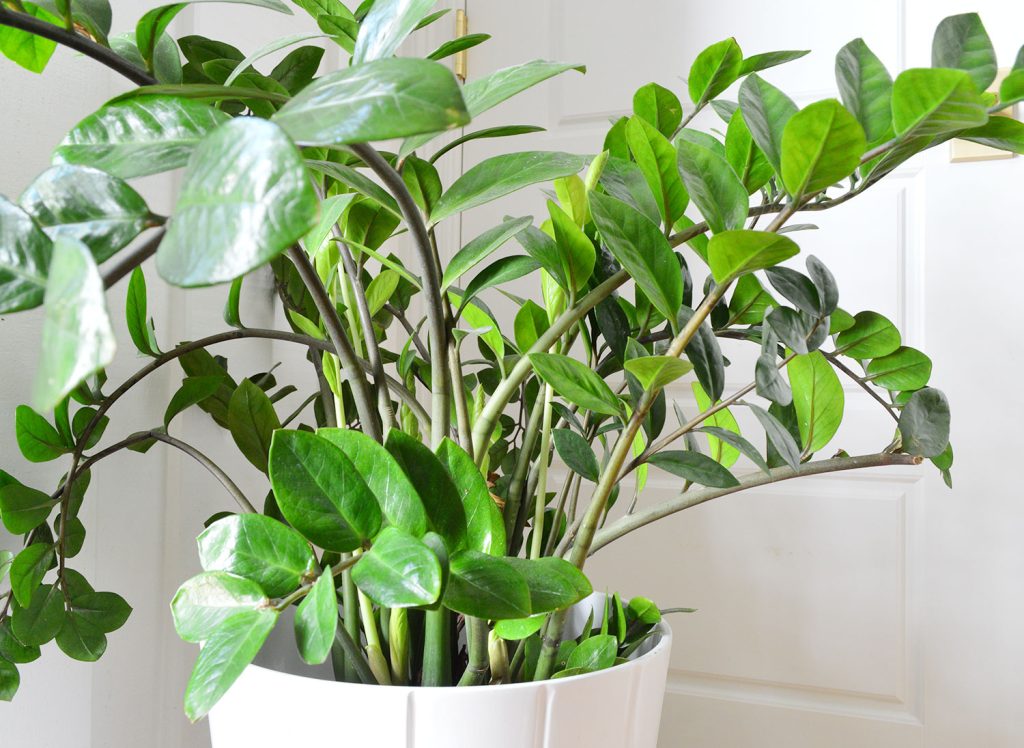

Are there different ZZ plant varieties?
There are a couple of types of ZZ plant past the usual model pictured right here. The 2 most typical varieties are the Raven ZZ (Zamioculcas zamiifolia ‘Raven’) and Zeni ZZ (Zamioculcas zamiifolia ‘Zeniz’). The Raven ZZ, additionally known as Black ZZ or Supernova ZZ, is a model with darkish, practically black leaves. The Zenzi ZZ is a dwarf model that solely grows about 12″ tall.
What does the ZZ plant symbolize?
ZZ vegetation are thought to represent prosperity, endurance, and longevity. It’s known as the Eternity Plant, in any case! In Feng Shui, it’s additionally thought to carry luck, success, and stability. That is another excuse it’s widespread in houses and workplace areas alike, past its basic sturdiness and resilience.
Are ZZ vegetation poisonous to cats?
Though ZZ vegetation aren’t often included in lists of poisonous houseplants, they will trigger discomfort when ingested by cats, canines, or people. They aren’t thought-about extremely poisonous or deadly, however their leaves and stems do comprise calcium oxalate crystals that may irritate pores and skin, mouths, and stomachs. This will trigger them to drool, vomit, or expertise different gastrointestinal misery. It’s finest to maintain ZZ vegetation away from curious pets or youngsters.
Extra Plant Guides
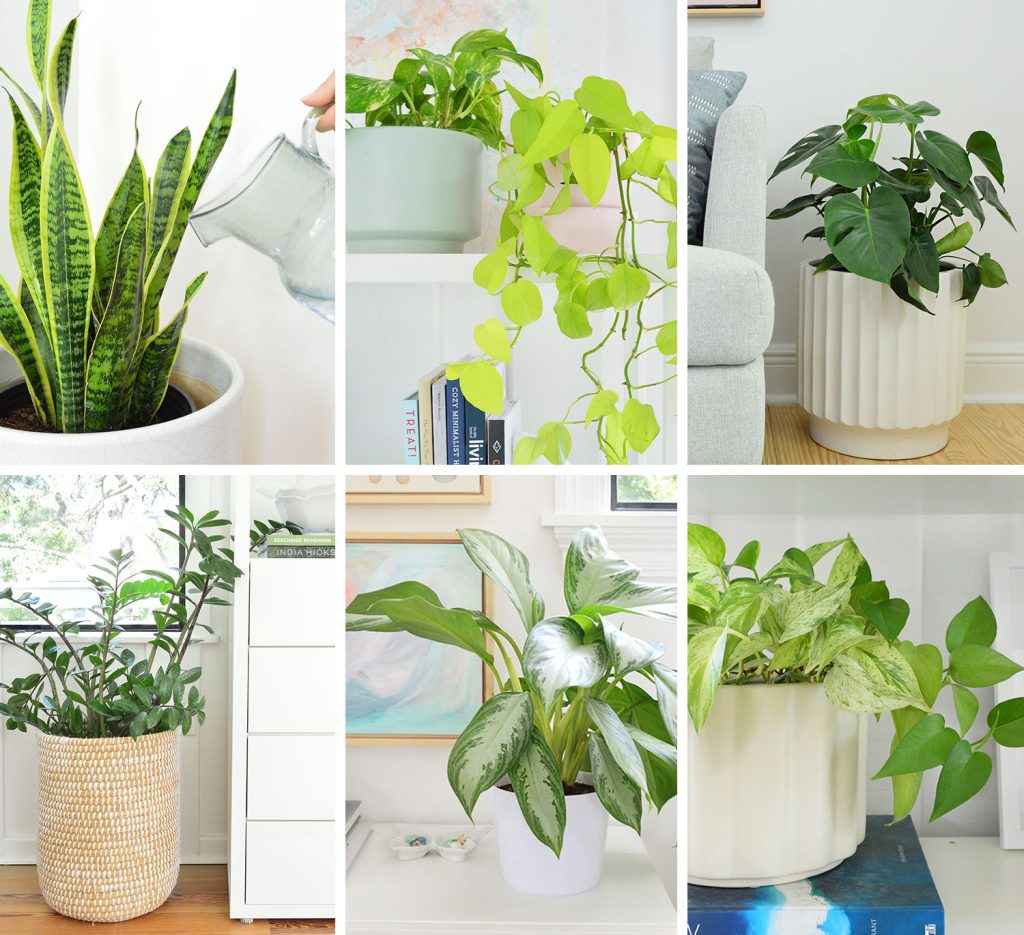

When you’re on the lookout for extra info on a few of our favourite vegetation (actual and pretend!) try a few of these posts under:
*This put up accommodates affiliate hyperlinks, so we could earn a small fee if you make a purchase order by hyperlinks on our web site at no extra value to you.